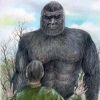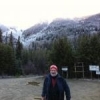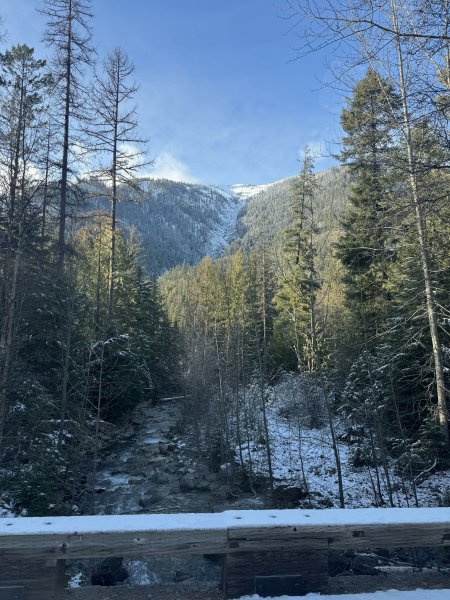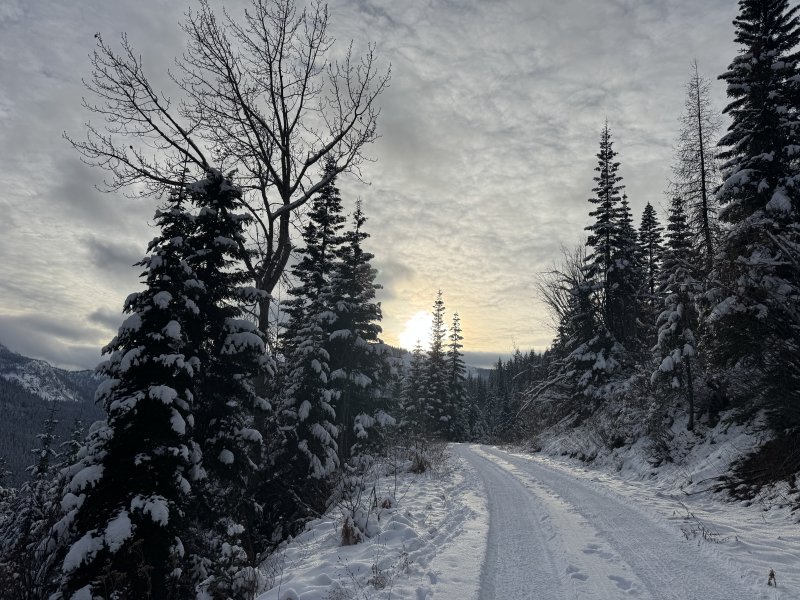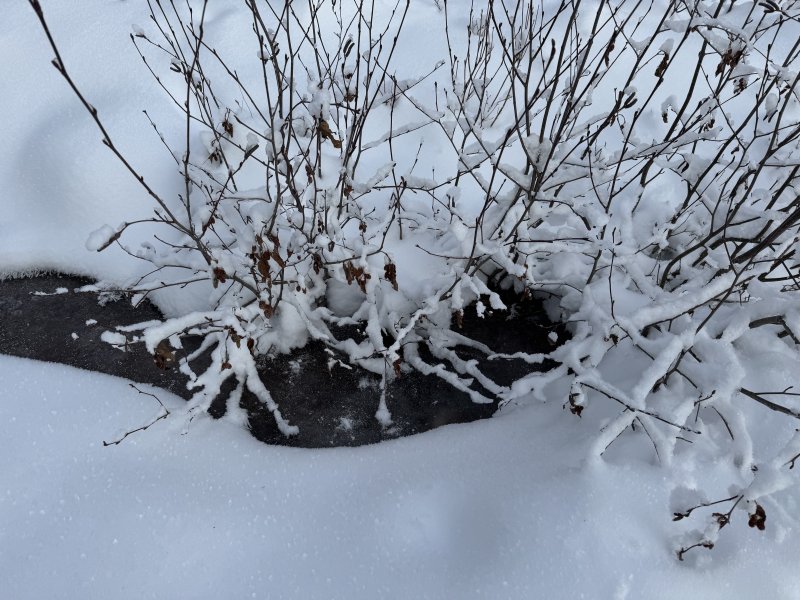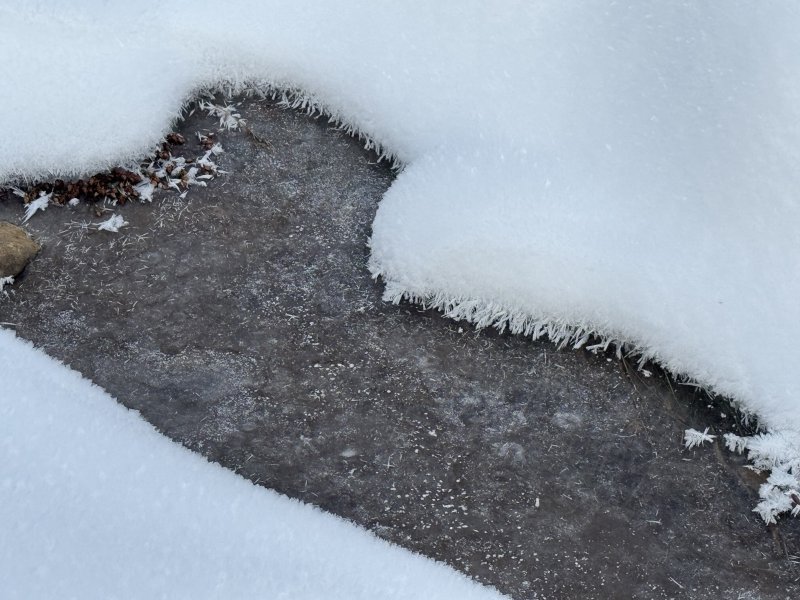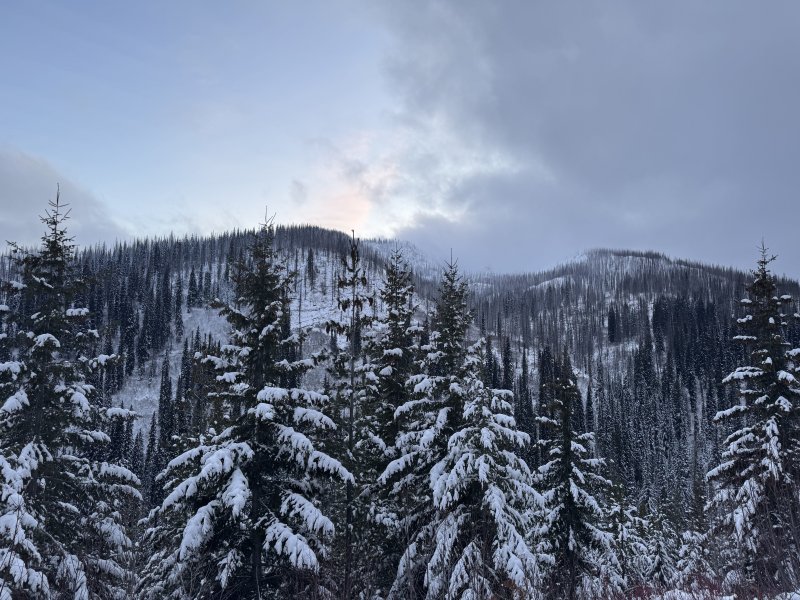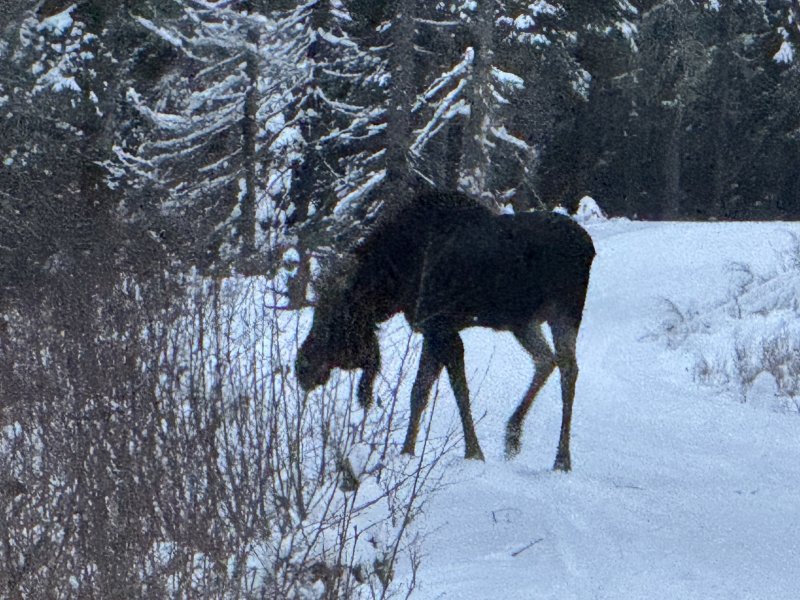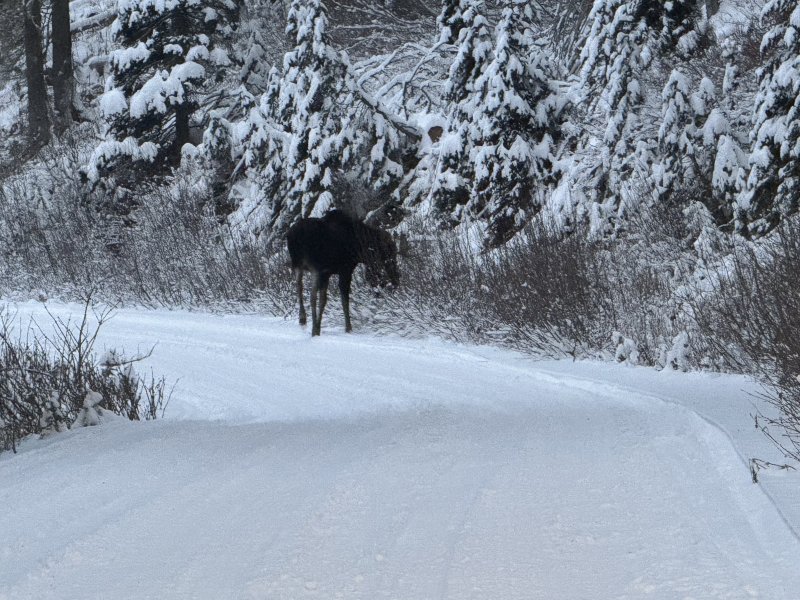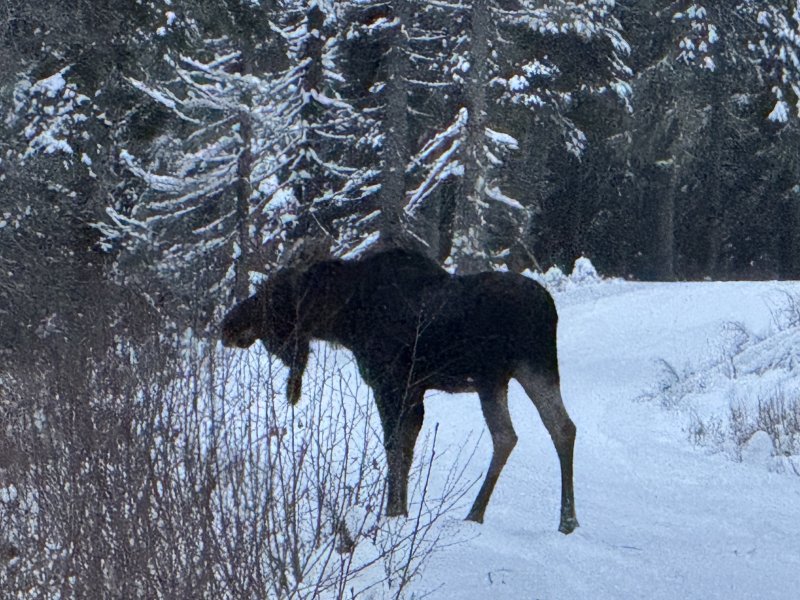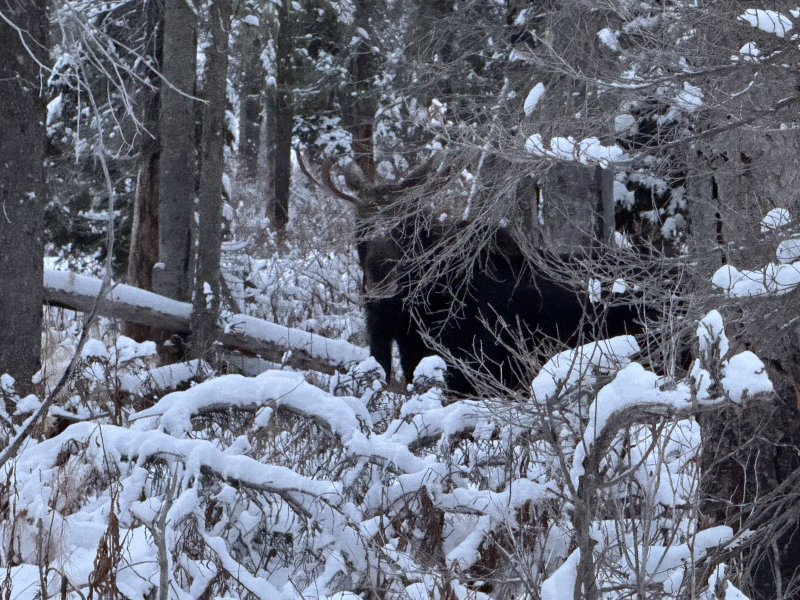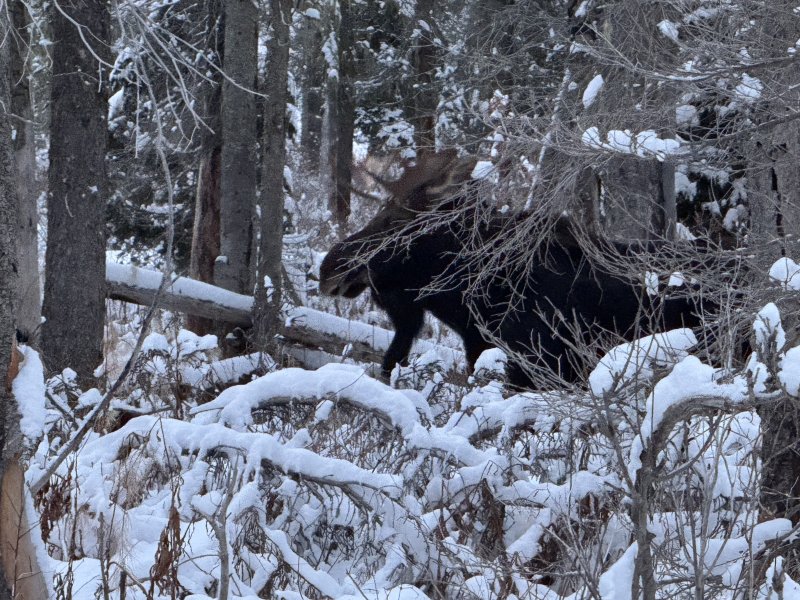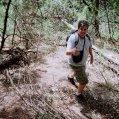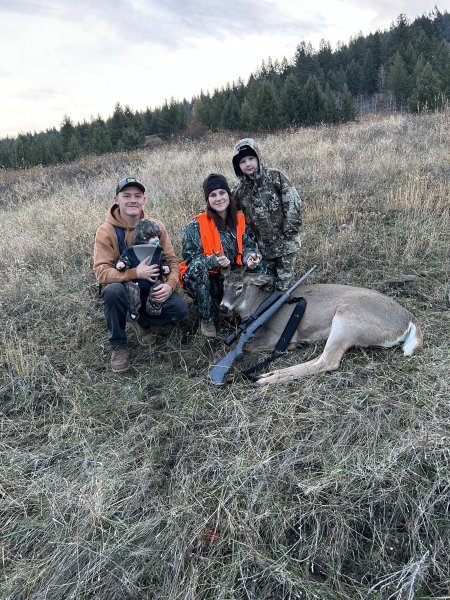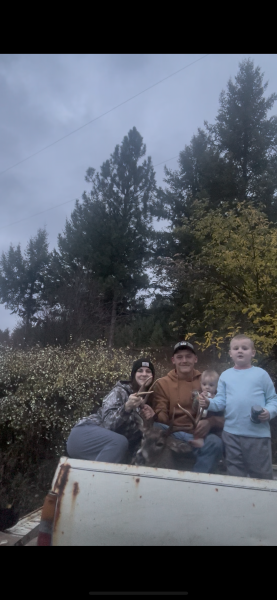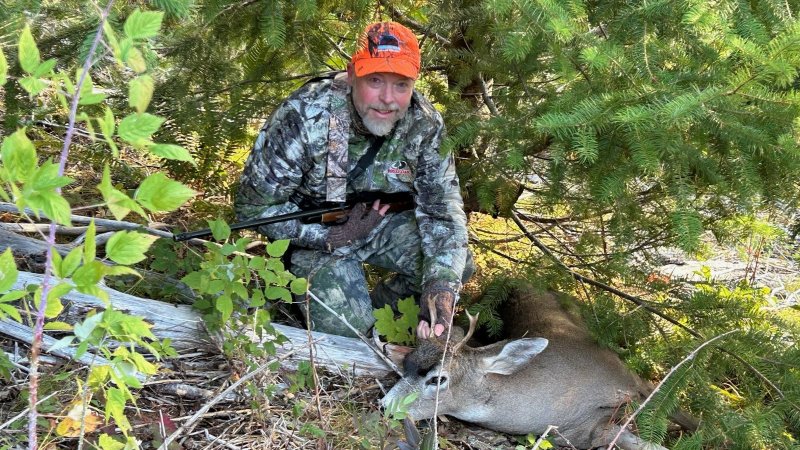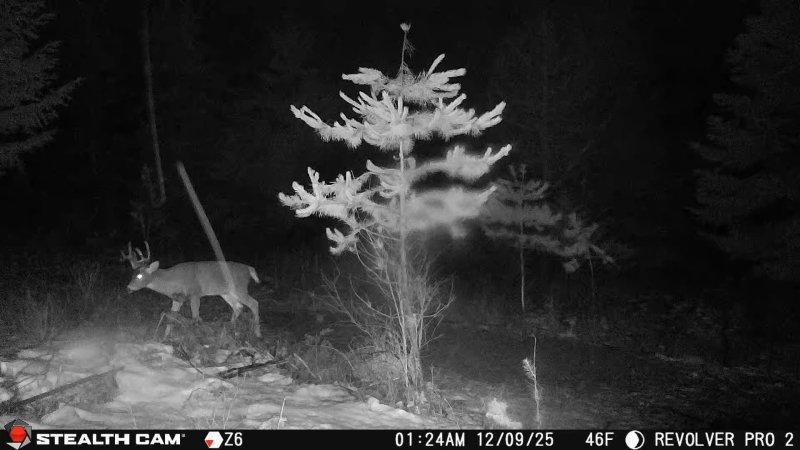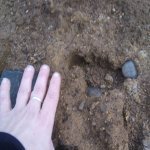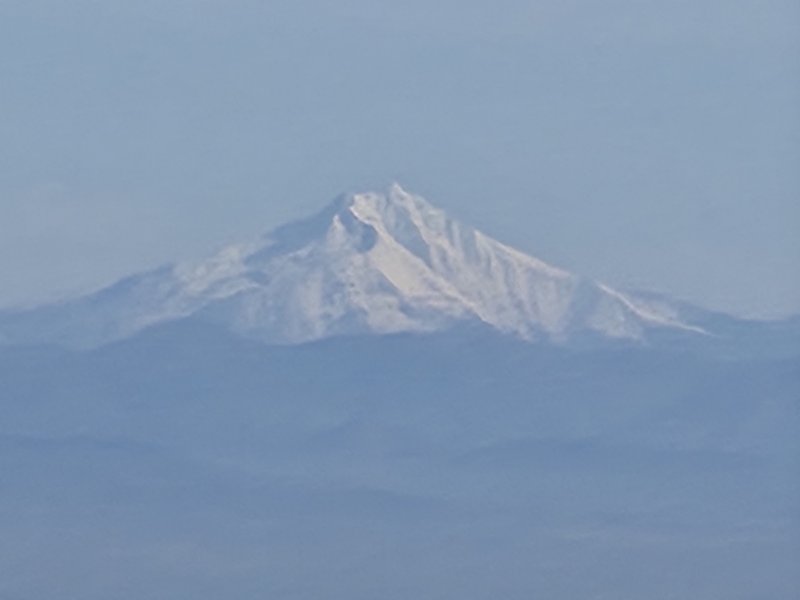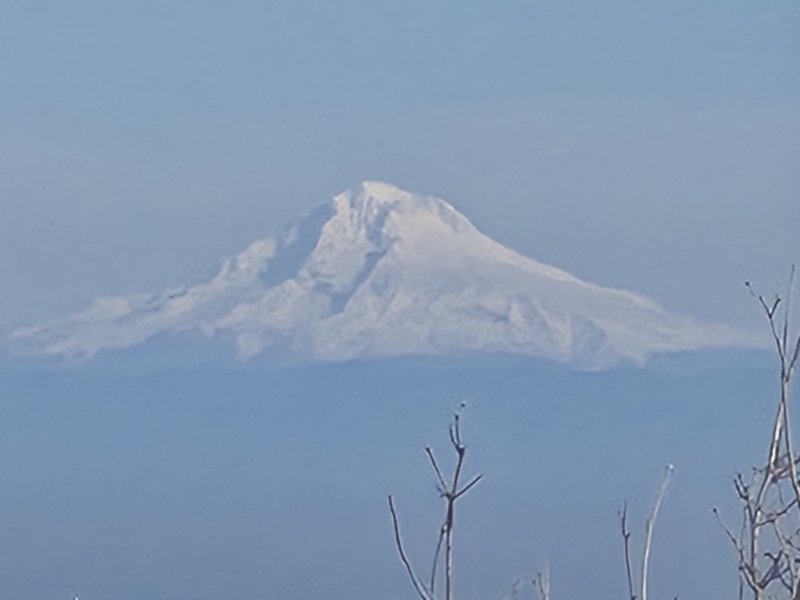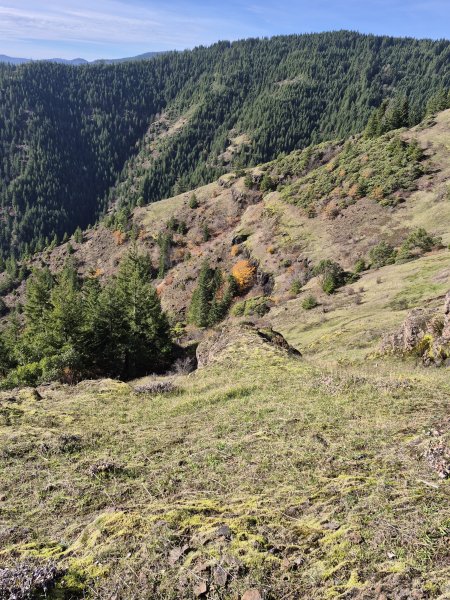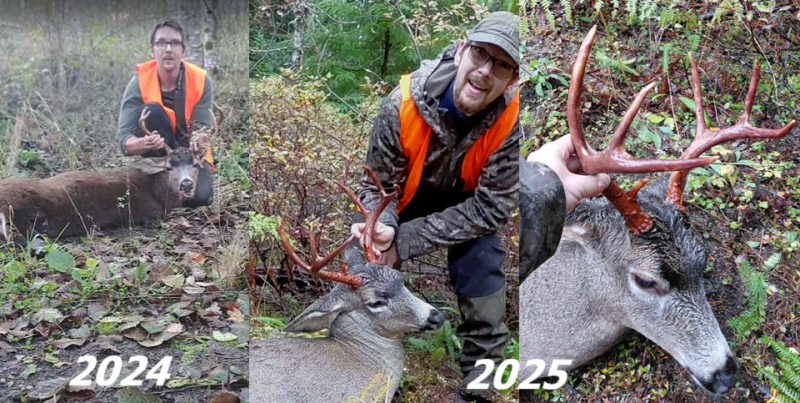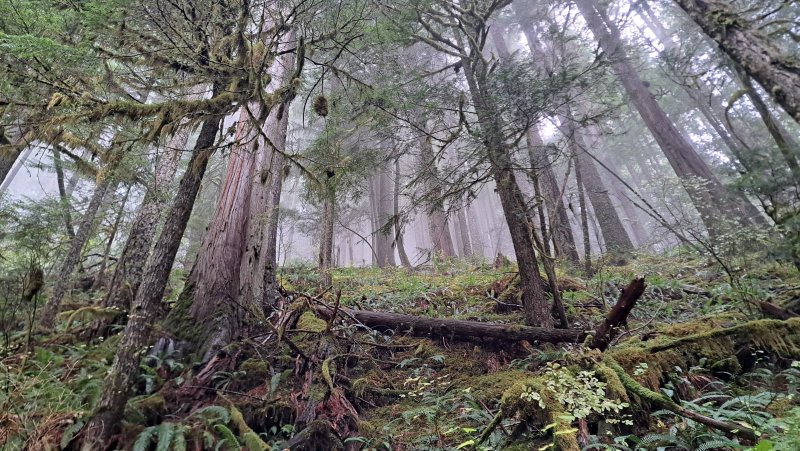Leaderboard
Popular Content
Showing content with the highest reputation since 11/15/2025 in all areas
-
This thought about tracks and encountering other critters .. I still think the most likely to be dangerous is other humans. There are a lot of good people out there. It only takes one problem person, though sometimes those travel in packs. Watch out around campgrounds and trailheads, they present a predatory person with an ideal opportunity .. people with their guard down, possibly few witnesses, and a ready way to escape / fade into the crowd (traffic). Maintain situational awareness .. ear buds out, cell phones pocketed / put away, hands free, and keys handy. You want to be able to walk to your car, open the door, throw in your pack, climb in, and drive away with no searching for keys etc while you are at your maximum exposure to risk. Probably all will be cool, but it is better to be over prepared than under prepared.5 points
-
I don't think sasquatchery is dying. SERIOUS, science-based sasquatchery is dying, pop-culture and wootard sasquatchery seems to be taking off .. unfortunately. It's become the equivalent of pink flamingos and lawn gnomes. It is very difficult to separate the wheat from the chaff. It has driven most of the serious researchers .. the ones not dead yet .. underground to get away from the "noise." There is nothing this forum can do about it. The world has moved "forward" in a not very appealing direction.5 points
-
Looks like 37 members voted. Top 5 1) Latest Bigfoot News 2) Researcher Discussions 3) Researcher Media 4) PGF Discussion 5) Historical Archive Library If you combine 2 and 3? You can see that researchers are truly our most valuable resource on this forum! 👏🏻👏🏻👏🏻 Thank you to all of our “boots on the ground” members who share their findings, pictures, audio, etc! I also want to thank Trogluddite for expanding the Historical Archive! 👍4 points
-
Yes, at least at times. I'm not too concerned when I'm in my "research area" or in other parts of this general area. I know I'm watched, followed, occasionally on the losing end of what seem to be practical jokes / pranks. I think if I were in danger there I'd have turned up missing long ago. They're only there when safe food is plentiful. Other places I'd be more calculatingly cautious at least until I learned the vibe / ground rules of the place. I don't care for finding cougar or bear tracks in my tracks when I return. That puts my hackles up much more than BF does. And now we have wolves in increasing number / increasing distribution, some that have learned to overcome / ignore human hazing. Bigfoot is the least of those worries.3 points
-
I want to thank Forums management for the opportunity to expand the historical archives. I've had a Newspapers.com subscription for awhile but was using it for other reasons. I really didn't think of its use for Bigfoot-related research until I was fact-checking a book of historical sightings and I discovered more newspaper articles than I could possibly make use of. It would have been a shame just to stuff that research into a closet and force others to re-invent the wheel.3 points
-
3 points
-
To quote Ripley, "has everyone's IQ's dropped while I've been in a cryogenic sleep the last 40 years?" Or something like that. And the answer is that IQs and attention spans have both dropped, phenomenally. Someone on Facebook posted an 8th grade civics test from circa 1880. I'm pretty sure I'd fail if I took it cold turkey. You can find numerous articles on colleges complaining that incoming classes need remedial math and instruction on how to read and analyze literature. So, it's not shocking that a forum like this one which doesn't have glitzy AI-generated recreations of "How Bigfoot interrupted our basketball game, dunked, and left" or 15-minute videos of "The Top 10 Most Horrific Bigfoot Attacks in Manhattan" can't compete for an audience used to getting their information in 60 second Tik-Toks. If that's what's askew with this Forum, I'm okay with keeping the recipe the same. Cliff & Bobo and Greg Pruitt mentioned on one of the last Bigfoot n' Beyond podcasts that at one time, the BFF was the place to go for Bigfoot information as it was an improvement over message boards and relatively open (i.e., no gatekeepers who "owned" the forums and ruled them with an iron fist, like some field research organizations). But now, to get visibility in a monetized world, you need people willing (and capable) of pounding out blog posts in 15 minute increments or video shorts on 18 different platforms. I just don't think that's what the Forums are (and I'm okay with that). As to Reddit, never has so much been said with so few words; well done, Beachfoot. (Okay, technically, the Commander, American Forces in and around Bastogne did better, but you still win the day here.) Even for the non-cesspool aspects of Reddit, it's just not an easy system to use and information in it gets lost faster than virtue in a ... in a place where virtue is lost quickly. I had a baseball site that was like a local bar. When Vox took it over, the regulars looked for a new place where everybody knew your name and Reddit was not it. It was difficult to find even basic threads on the topic there. Rant over. I"ll go back outside to shake my fist at some clouds now.3 points
-
Yah my cousins are flooding in Sedro Wooley! Blue sky is nice! Been a good visit with my daughters family.2 points
-
2 points
-
2 points
-
Yeah, Bullwinkle can be very obstinate about his right-of-way. I encountered a very large-racked specimen in the Yahk watershed while elk hunting from my mountain bike on an abandoned logging RR. He kept plodding towards me, ignoring my hollering and whistling, until I had no choice but to turn around and ride away. Of course, moose were closed to hunting at the time.2 points
-
They found artifacts from where the cabin was standing and a short distance away is a gold mine. This is stunning news.2 points
-
There are reports out of "woo-land" that are impossibly large for F&B. Bone structure wouldn't support the weight. Rather than say "liars", I'm going to say "I'm not sure what they saw, even if they perceived it as bigfoot." I would say that 14 foot range is about right. A witness described one giant BF that would occasionally visit her dad's property ducking under a branch they measured at 14 feet. That doesn't mean it HAD to duck, might have cleared, might not have, but it stooped slightly when it went under. I watched her interact with a group of other bigfooters. I began thinking she was just a "groupie" wanting to fit in. After 4-5 days in the field, I came away thinking she was the only one of the bunch that was legit, the rest were slightly delusional. I'm inclined to go with her report. The first one I saw .. I don't think was 14 but I think it was some amount over 10 because BFs have legs shorter, relative to torso length, than ours, and it was crotch deep in water that hit me right at chin level .. 4.5 to 5 feet deep. The math simply requires it to be over 10 feet, possibly nearer 12. If that is the one that left the tracks I saw 2 years earlier, it leaves 24-1/2 inch tracks. When I talked to Henner Fahrenbach a few years later he said the biggest tracks in BFRO's "library" that weren't debunked were 27 inches. So .. math, not concrete evidence, but again, backing into that same answer. One of the Canadian guys, I think either Dahinden or Green, mentioned having some initial doubts about the authenticity of the Nor Cal (Bluff Creek, etc) tracks because the shape was different than what they were used to researching in Canada. Those northern tracks, they wrote, were comparitively longer and narrower, and had the slightest hint of curve .. but not an arch! .. rather than the very broad shape of the nor cal style tracks. What they describe for tracks matches what I found. I wonder if what I saw, and the tracks I saw, weren't from a long distance traveler rather than a resident. That said .. unproven. Should be considered but also should be taken with a substantial grain of salt. We are still in discovery, not in study.2 points
-
Here is a video chronicling our investigation into an area that we recently located using report data and terrain analysis. There is some interesting stuff happening up there and we will be going back and monitoring the lower elevation edges throughout the winter.2 points
-
I enjoy the people that are here and there is more content across this boards history than one could ever get through. Nothing needs to change, I was simply pointing out that forums are not dying but smaller communities are. You are doing just fine.2 points
-
you have your mind made up and new data doesn't get through because you are anti science and closed minded.2 points
-
2 points
-
2 points
-
But they are dying. I mentioned three right off the top of my head. The BFRO has moved their forum to Facebook specifically. We are not a social media platform like Reddit or Facebook. I personally do not like social media platforms. But it would seem people like me are a minority.2 points
-
2 points
-
2 points
-
2 points
-
2 points
-
1 point
-
1 point
-
Yosemite Search and Rescue has issued a breakdown and description of all of its responses for the year 2024. Granted, they are not a law enforcement agency but at least we get a better idea of what is going on in the park and why. For the record, I do not buy any of Paulides' "Yosemite Cluster" hypothesis at all. Yosemite Search and Rescue 2024 rescue, death numbers released1 point
-
1 point
-
That article from Seattle Magazine about the man kidnapped by a Sasquatch….happened in 1961. I think these incidents must have occurred countless times and are at least partly responsible for unsolved disappearances. I’ve wondered if Sasquatch swoops from trees and scoops up hikers and hunters etc. After a close call with a mountain lion in a tree, I was very careful to check trees for lurking cats , or bears. And that’s when I discovered rock stacks in a tree and subsequent trips I observed the rock stacks changed arrangements and also rock types. It did make me uneasy and after creepy experiences, I quit going there. And one of the reasons was the realization that Sasquatch could ****** people off the ground , even though I had never heard of it, just seeing those rock stack changes prompted me to think of Sasquatches in trees … Really fascinating account of Sasquatches using fire and living in a network of caves and what seemed to be like a Sasquatch village.1 point
-
1 point
-
I would agree that if you have sasquatches around, the bears are probably not. It's funny that the most famous nighttime sasquatch terror stories are the kidnappings of Albert Ostman and Muchalat Harry, both of which occurred in the 1920's........also when the Ape Canyon cabin attack occurred. No (or little known) kidnappings since. A sasquatch kidnapping might still beat a bear mauling while wrapped up in a tent...........1 point
-
I wouldn't quite put it that way though I can see how someone else might. I think people are just too "danged" sure of themselves, too sure of their infallibility, too sure a mere (monkey, primitive human, near human .. pick one) can't outsmart them. That leads to believing either bigfoot a) doesn't exist or b) must be "magical". For people who have seen enough, non-existence isn't an option. When confronted with what is left, a binary choice between accepting their own limitations or leaping to "magic", their feeble egos choose "magic" as the explanation. I don't happen to fall into that trap. That said, there are a few repeating occurrences ... in other words, good probability there is something real ... which are either beyond current science -or- there's a bit of trickery in play so that we fail to use the correct piece of current science when trying to understand / study / identify it. I think both of those are a cool challenge to try to get to the bottom of and I accept in advance that I may fail to do so. Doesn't make them magic though. (I think your assessment of UFOs, overall, is a very sensible place to start.) MIB1 point
-
1 point
-
The paranormal woo aspect is quite disappointing. It is my opinion that these are excuses for no proof of the creatures existence. Better time could be spent procuring a body on a slab instead of being explained by Science fiction. This only makes the case that the creatures probably don't exist in any form. Ufos by definition are certainly real. Are they manned by extraterrestrials,probably not.1 point
-
So when the debate gets too hot for you? You name call and threaten to leave. You wouldn’t have lasted five minutes on here when I joined so long ago. If you leave that’s your choice.1 point
-
And how do you know he is more interested in learning than selling things? Do you see your own double standard being applied now? You do this often. This guy finds Bigfoot stick structures in Colorado every 50 feet and is to be believed. But this guy writes books and is a con artist. You know what I believe in? I believe in PROOF. And it’s been my experience that people who get involved in the WOO? Are the ones willing to give up on providing PROOF. It’s a crutch. A cop out. We followed the Bigfoot tracks and then they just disappeared. Well did a 800 lbs primate suddenly levitate into the air? Or did you just lose the trail? If Bigfoot is self aware? (Great apes are as well) It understands it’s leaving tracks. And it may well use counter tracking tactics against humans. No UFOs, portals or woo necessary. And finally Steve Isdahl is a hunter. Meldrum was a primate locomotion scientist. Nothing against hunters….. but come on. Everything we know about Bigfoot locomotion comes from Meldrum and Krantz. Isdahl reads stories sent to him from the public on a you tube channel. You believe whom ever you want to believe.1 point
-
But what is a realistic definition of "the area where they are?" From some old research of mine, which I may update, the home territory for black bears ranges from 1-15 square miles (females) to 8-60 square miles (males). For grizzlies, its 50-300 square miles (females) up to 1,500 square miles (males).* Where would Bigfoot, as a species, slot in to that? Also, what would the regional variations be? Certainly in the PNW, one should expect more compact and stable home ranges. In the northeast US, one of the most "crowded" sighting areas is the corridor around Whitehall, New York.** I don't believe that all of those Bigfoot encounters are the result of Bigfoots that have a home range there. * No citations, I need to update this rudimentary effort. ** This is circa 2018 research.1 point
-
I read missing 411 Western USA and Eastern USA saw some of his Missing 411 movies as well I'm starting to think he is more of a profit agent1 point
-
So long as Bigfoot's needs are met, they stay in the area they are. If conditions change, they move to a place with more stable conditions which can deliver on their needs.1 point
-
I think some are some aren't. In my area we see indications of both. My hunting / hiking / bigfooting buddy works some weekends on a ranch where there appears to a low level of year around activity. Likewise, where we hike, camp, fish, and where I do my main research, the activity is very very seasonal and can seemingly be followed leading up to presence there and after presence there ends. I would expect that in some areas with different conditions there would be a greater propensity towards year round occupation in some place and greater propensity towards only seasonal occupation .. ie migration. So I think you have to look at the specifics of a given location and answer for that location rather than trying to give a single answer that covers all situations, all locations. There is a hole in that as well, potentially, and that is that it is not just "my" spot that is active at that one time, there's a mountain chain over 1000 miles long and the activity peaks within a week in any given year the whole length of the dang thing so it is possible that rather than migration, what we're seeing is some quirky seasonal change of behavior. Or .. BOTH. Because, again, we do see activity to the north 4-6 weeks earlier and to the south 3-4 weeks later. It may be both migration and seasonal something peaks converging. The data is sparse and we have to be cautious about over-investing in specific interpretations which might not fit a fuller data set.1 point
-
1 point
-
1 point
-
Ron Morehead seems like a really nice guy. But he is not a physicist. Neither am I. But I do have a basic foundation of knowledge. Converting matter into energy. Yes. Thats true. E=mc2 We have fission. Thats a nuclear bomb. Or a nuclear power plant. Highly radioactive. Atoms are split and energy is released. We have fusion. Thats our sun. Under intense gravitational forces it combines hydrogen atoms to produce photons aka sunlight. We have never recreated it on earth. And at Cern they are accelerating matter and antimatter particles at ridiculous speeds and colliding them which releases energy and new particles. None of this is particularly healthy to biology up close and personal. But at a distance like say from the sun to the earth? Its a key element in life. In fact a flower converts photons into sugars that builds matter. It’s called photosynthesis. This is how plants grow on earth. Absolutely none of this is revolutionary. But it’s also not applicable to a biological creature cloaking itself at will. I.e. Hiroshima’s “little boy” bomb was 141 lbs of enriched uranium. An 800 lbs Sasquatch would destroy 5 large cities every time it converted itself from matter to energy. And of course vaporizing itself in the process. And irradiating a very large area as well. This idea of converting mass to energy and back to mass again sounds conspicuously like the transporter room on the Star Ship Enterprise. Its science fiction. And even then Capt Kirk needs the star ship and crew to complete the task. I have no idea where a 800 lbs Sasquatch would be hiding such advanced technology assuming that its even possible. Which by our current understanding of physics it is not. So I think this theory is dead on arrival.1 point
-
1 point
-
1 point
-
I think we should be comparing apples to apples. The first Bigfoot forum I ever joined was the BFRO “blue room”. I was basically ran out of there for my pro kill stance, but whatever. It’s not the point. The point is that several years ago the BFRO shut down the blue room and opened up a Facebook page. They have 111 k members. Good for them. The hound hunting forum I belonged to? Gone. The jet boat forum called mean chicken…..gone. Along with the massive repository of knowledge. How does a very specific old school PHPBB board compete with Reddit or FB or the next great social platform? Good question.1 point
-
1 point
-
I know many here are hunters based in the PNW and so I figured this section needed a black tailed deer thread as they are the grey ghost of the cascade range. The mature blacktail buck is truly the toughest ungulate to locate and hunt in North America Please feel free to share stories, strategies and photos of the pursuit. I will start off with my own experience and strategies. In my few years of learning mature black tail buck behavior and patterns I have found that these guys like to be up along benches, plateaus and saddles that are difficult to approach, they routinely move between these kind of bedding areas and a series of feeding zones such as 5 to 8 year regrowth of clearcut or select cut stretched over terrain that has relief points and staging areas. If there are springs and marshes nearby the chances are even better that you are on a great spot, they are edge habitat creatures and like irregular pockets of different forest types and feed heavily on general browse in the summer favoring red huckleberry leaves, alder, vine maple and cottonwood. In the fall and winter they shift to hitting lichen, mushrooms, alder, salal and huckleberry tips. The older mature deer become very nocturnal and move to a very heavy lichen diet and hold up in old growth timber, these older deer will tolerate a little more snow to remain in higher areas that predator pressure is lower. The also seem to move less overall and don't run until later in the rut but rather wait for does to get pushed into their core areas as they escape the younger bucks and human created pressure. At 4+ years they essentially build a knowledge of what areas do not get pressured that also have and retain resources late into the year. As far as basic behavior they will use the wind and stand perfectly still for well over 15 minutes watching and listening before entering into a new environment to try and pick out predators and movement. I have had them catch me move just an inch and they will circle the detected disturbance until they can catch a scent before dropping their guard to feed or approach, they will also stay in their bed in the brush until you get almost on top of them if they feel you do not know they are there.. Younger bucks make more mistakes and will lean hard into the rut and take chances if there are hot does nearby. My goals for getting close are to identify remote transitional habitat pockets, locate feeding zones and then key in on old rub routes within 60 yards of primary game trails that take me to knobs, benches and flat top ridges. I then will set cameras up along staging areas and try to plan still hunt routes based on dominant wind and barometric pressure changes around wet nasty weather. I also E-scout often to try and understand how the does are using the area and how the bachelor groups settle in around fall as they break up. I often find higher deer density in areas that have some south east exposure for warmth in winter as well as some wrap around benches to face north east as this is an escape from the wind in winter and some shade and cool in summer. Hope this is helpful to some of you guys out there and feel free to add any tips you have.1 point
-
Very good learning tool but I disagree with his approach toward declination. "East is least and west is best" sounds simple but it adds an element of work in the field that, in my opinion, is totally unnecessary. Moreover, if a person is trouble, because they are injured or suffering from hypothermia, and not thinking correctly, they may add the declination rather than subtract it. Now, they will be far off course and that error may needlessly cost them their life. I always draw declination lines on my map in the confort of my home and before I ever go into the woods. That way, I can take readings on the fly without ever having to orient the map. The declination lines drawn in advance cure that problem. A few other issues can rear their ugly head in the field that cause taking a reading a challenge. How do you easily orient the map so when there is a torrential downpour? When you took a reading, were you sure there wasn't metallic substance in a rock just below the surface you laid the map that could affect the magnetic needle? With my approach, I can lay the map on an electromagnet and it doesn't matter. I'm no longer using the magnetic needle to take a reading. My approach allows you to take a reading the fly, in rain or snow. It doesn't matter, it is quick, and there is no stopping to orient the map. Here is the best information I've ever found that talks about navigation skills and terrain association and it demonstrates the map-marking technique I mentioned above: https://www.adkhighpeaksfoundation.org/adkhpf/navagation.php Here are two video that show the technique of drawing magnetic north lines on a map. The bottom one discsusses declination at length if you are so inclined: https://www.youtube.com/watch?v=kpXibF_yK2c https://www.youtube.com/watch?v=peu7uMp0cVU Edited because I wanted to link a 2nd video by the same individual1 point
-
I got out for a solo run on Sunday afternoon to the Bear Creek watershed on the east side of Harrison Lake. The weather was mild and broken clouds, until I reached the summit of the east ridge of the valley, when the wind picked up and brought in cold showers. Of course, I didn't take any pictures on the way up, so all I captured was cloudy views of the lake, 4600' below. The only signs of wildlife were some deer tracks, bear scat, a few squirrels, and 1 skunk, but it was refreshing to get out in the mountains after a few weeks in town.1 point
-
I don't have a smartphone; I think it would be harder to use this format on a phone. Does anyone even learn to type anymore? I agree, oldies like us used to like to have discussions at length, for days or more. I mostly blame social media, which has damaged attention spans and increased sources of information. Another reason could be progression of knowledge; people learn answers to personal questions and move on.1 point
This leaderboard is set to New York/GMT-05:00


